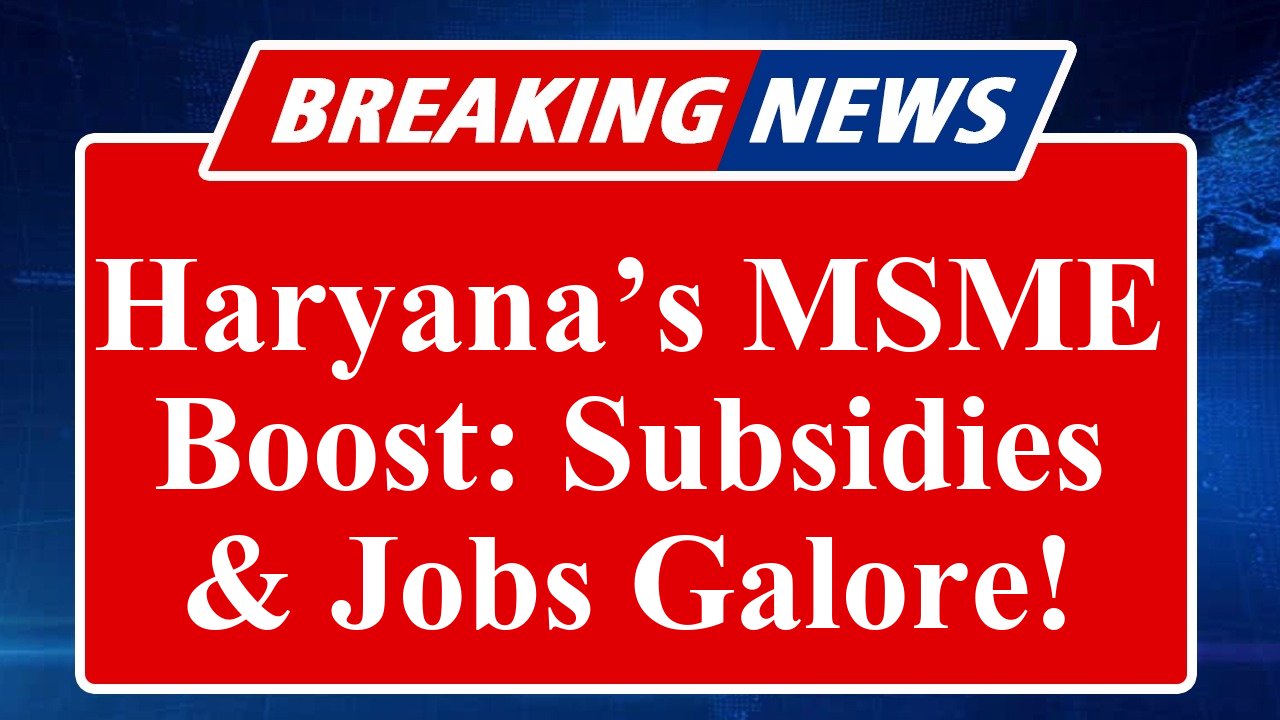Haryana’s government launched a new MSME Support Scheme on June 29, 2025, to empower small businesses with enhanced financial aid, tax incentives, and skill development programs. Aimed at fostering entrepreneurship and economic growth, the scheme offers subsidies, low-interest loans, and digitalization support to strengthen the MSME sector, a key driver of Haryana’s economy.
Haryana’s MSME Scheme: A Game-Changer for Small Enterprises
On June 29, 2025, the Haryana government rolled out a transformative MSME Support Scheme aimed at bolstering the state’s micro, small, and medium enterprises (MSMEs), which form the backbone of its economy. The initiative, announced by Chief Minister Nayab Singh Saini during a state-level MSME conclave in Gurugram, seeks to address the challenges faced by small businesses, including access to credit, technological upgrades, and market competitiveness.
The scheme introduces a slew of incentives tailored to meet the diverse needs of MSMEs. A key highlight is the enhanced Interest Subsidy Scheme, which provides 5–8% interest subsidies on term loans for 5–7 years, applicable to new MSMEs, startups, and enterprises focusing on import substitution. This subsidy, as per the Haryana Enterprises and Employment Policy (HEEP) 2020, aims to reduce borrowing costs for businesses with investments in plant and machinery not exceeding ₹1 crore for micro-enterprises and ₹10 crore for small enterprises, with annual turnovers capped at ₹5 crore and ₹50 crore, respectively.
To promote quality and global competitiveness, the scheme includes the Testing Equipment Assistance Scheme, offering up to ₹20 lakh in subsidies for MSMEs to establish testing facilities for raw materials and finished products. This aligns with the “Zero Defect” goal to enhance product quality and market reach. Additionally, the Electricity Duty Exemption provides 75–100% relief on electricity duties for 5–20 years, depending on the enterprise’s scale and location, significantly lowering operational costs.
The state government has also prioritized digitalization and skill development. A dedicated Digital Transformation Fund will support MSMEs in adopting advanced technologies, such as e-commerce platforms and automation tools, with grants covering up to 50% of the costs, capped at ₹10 lakh per unit. Furthermore, a Skill Development Program, in collaboration with the National Institute for Micro, Small and Medium Enterprises (ni-msme), will train 50,000 entrepreneurs and workers over the next three years, focusing on modern manufacturing and management practices.
To boost employment, the scheme extends the Employment Generation Subsidy, offering ₹36,000 per year for SC/Women employees and ₹30,000 for others in ‘B’ and ‘C’ category blocks for five years. This initiative aims to create over 100,000 jobs by 2028, particularly in rural areas, fostering inclusive growth. The state has also streamlined the subsidy application process through the Udyam Registration Portal, ensuring transparency and ease of access.
Market access is another focus area, with the scheme providing Market Development Assistance to help MSMEs participate in national and international trade fairs. A 75% refund on net SGST paid annually will further ease the financial burden, encouraging expansion and diversification. The government has allocated ₹2,000 crore for the scheme’s implementation over the next five years, with an emphasis on sustainable practices, including energy and water conservation subsidies.
Haryana’s MSME sector, contributing nearly 30% to the state’s GDP and 40% to its exports, stands to gain significantly from these measures. Industry experts have lauded the scheme, noting its potential to position Haryana as a leading hub for small businesses in India. However, challenges such as bureaucratic delays and awareness gaps among rural entrepreneurs need to be addressed to ensure effective implementation.
Disclaimer: This article is based on information from official announcements by the Haryana government, industry reports, and credible sources like msme.haryana.gov.in and pib.gov.in. Readers are advised to verify details with official portals for subsidy applications and eligibility criteria.

